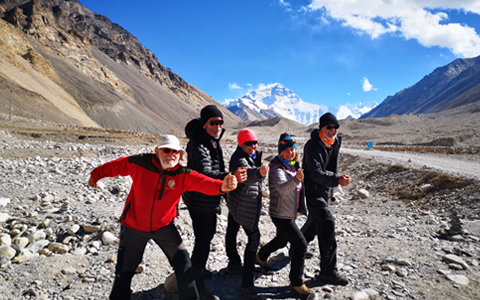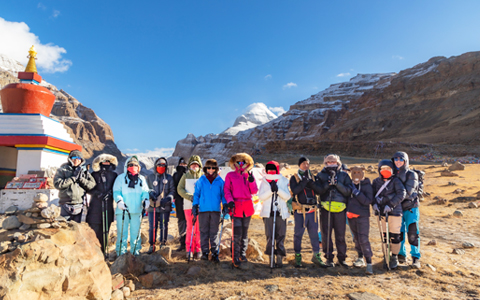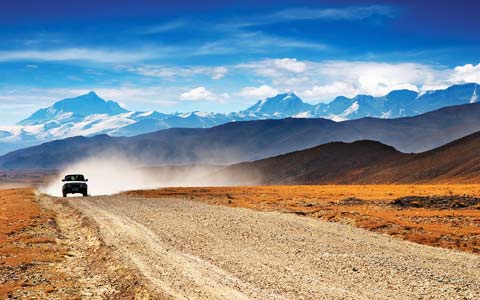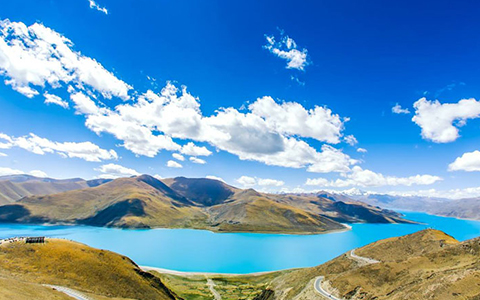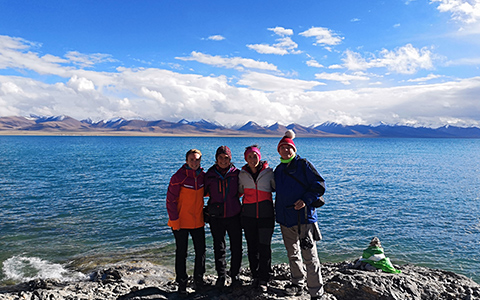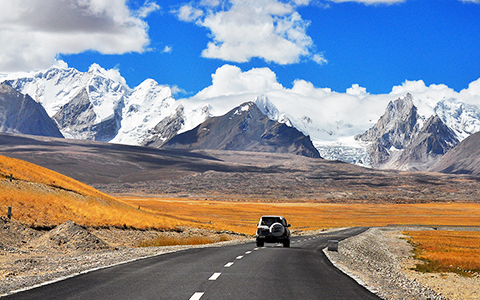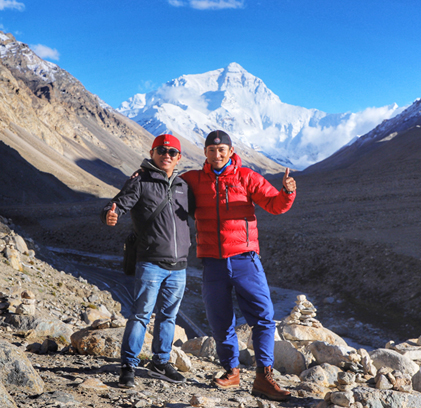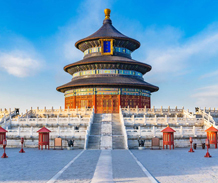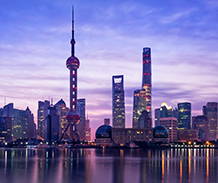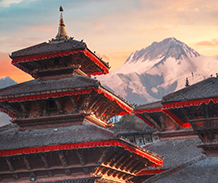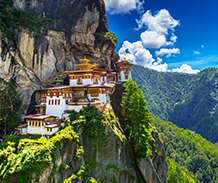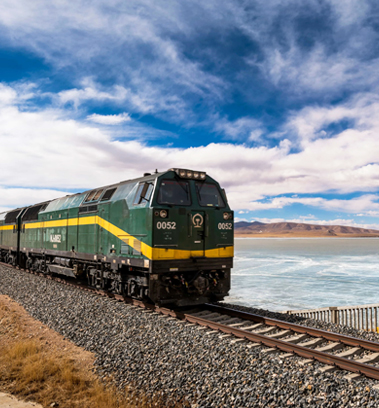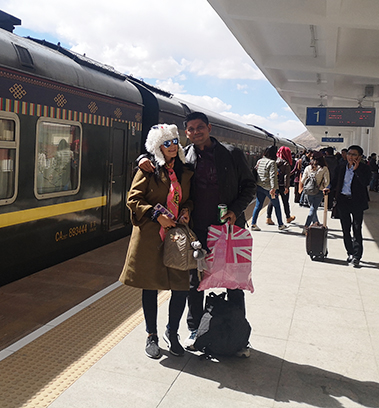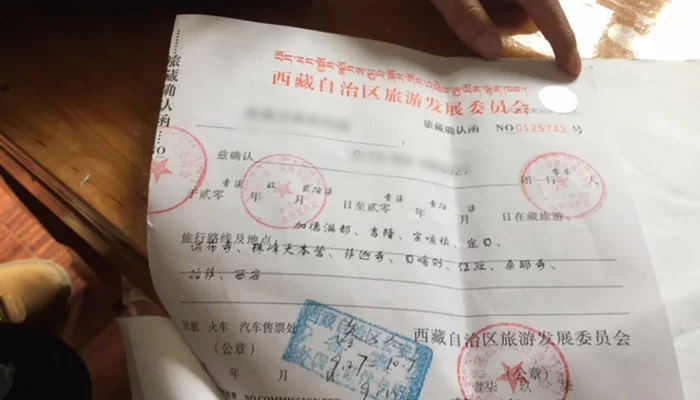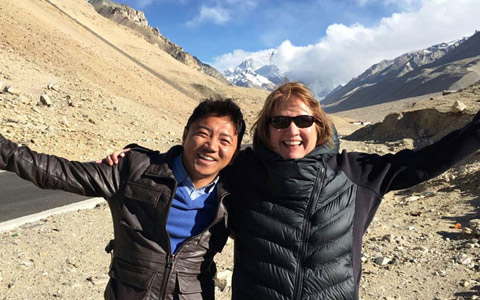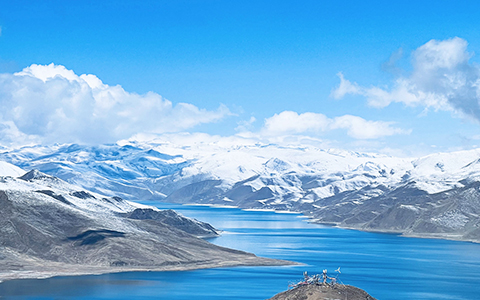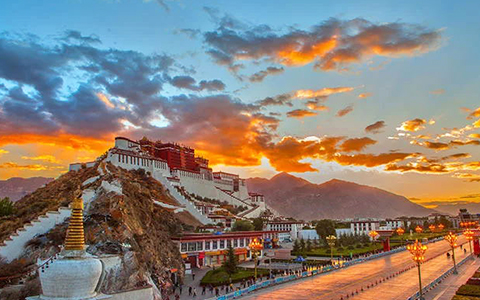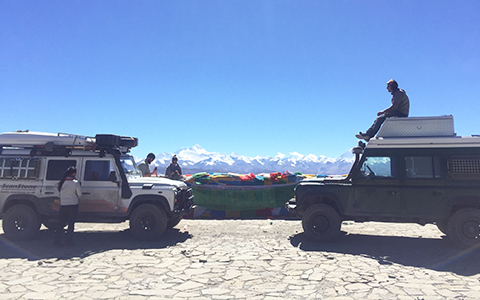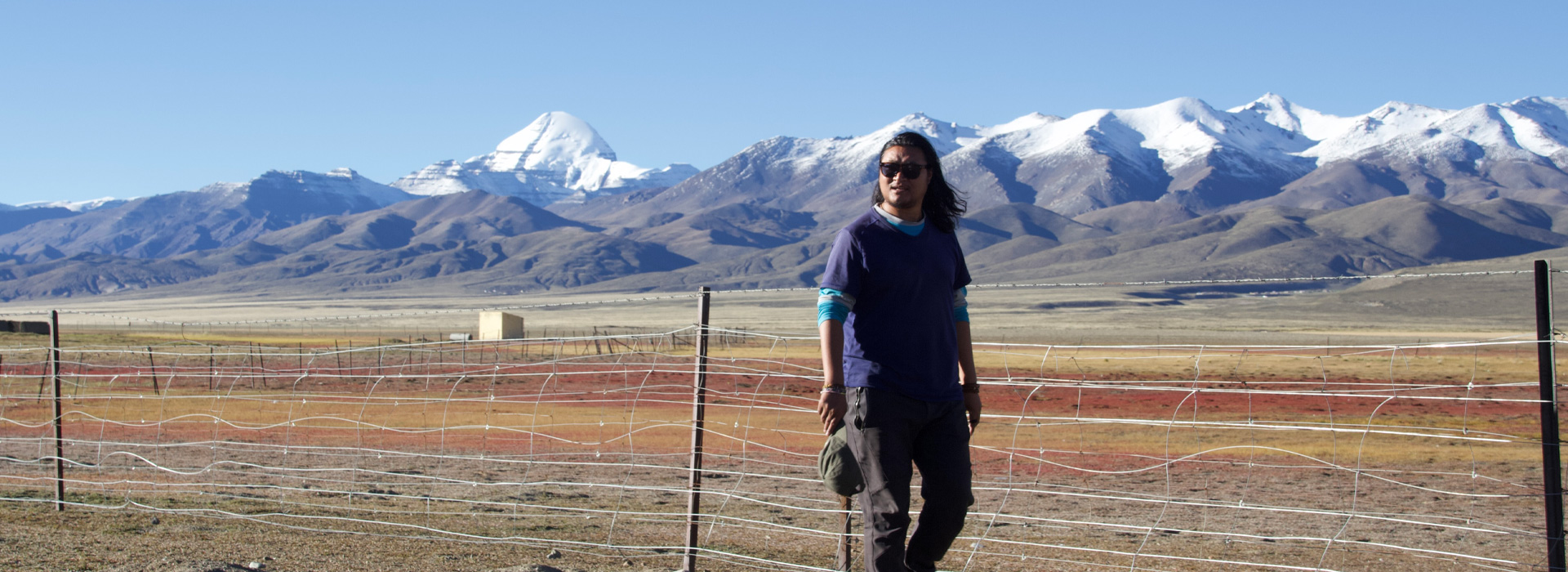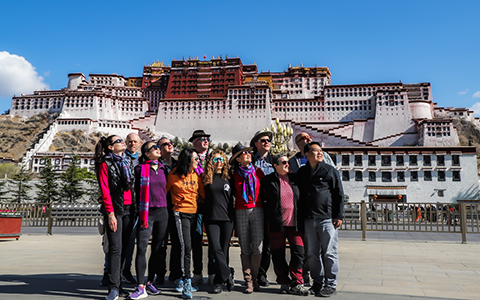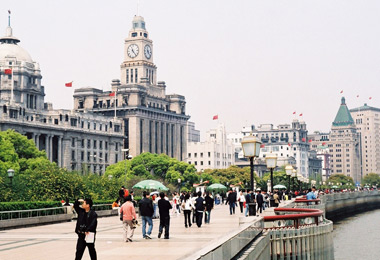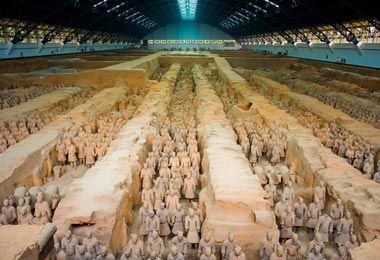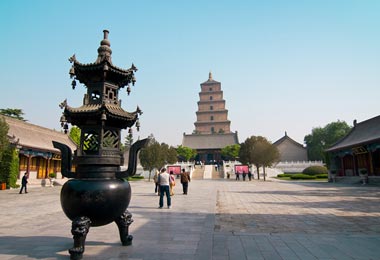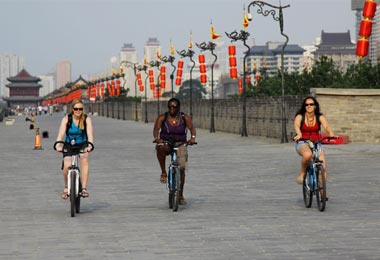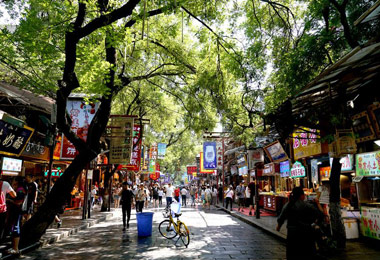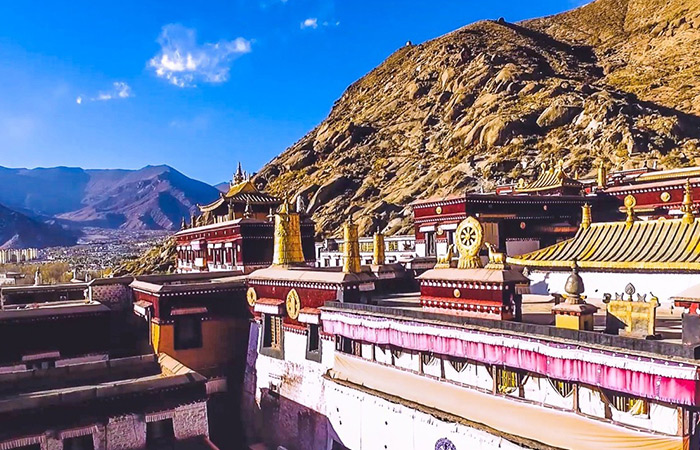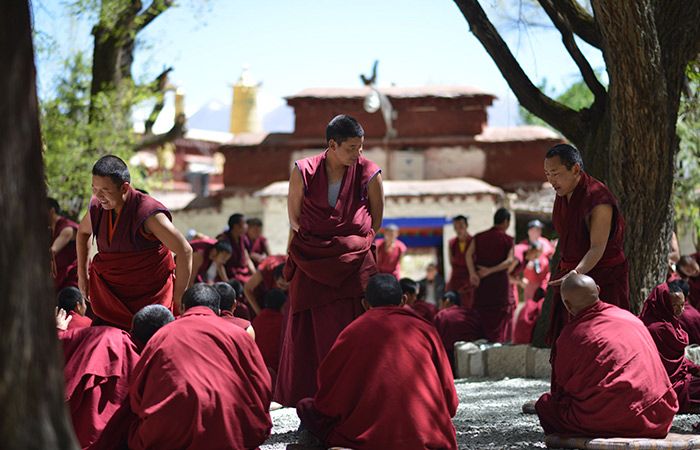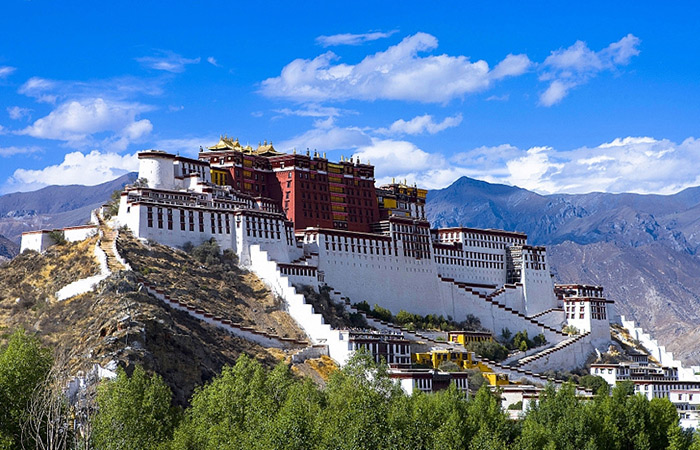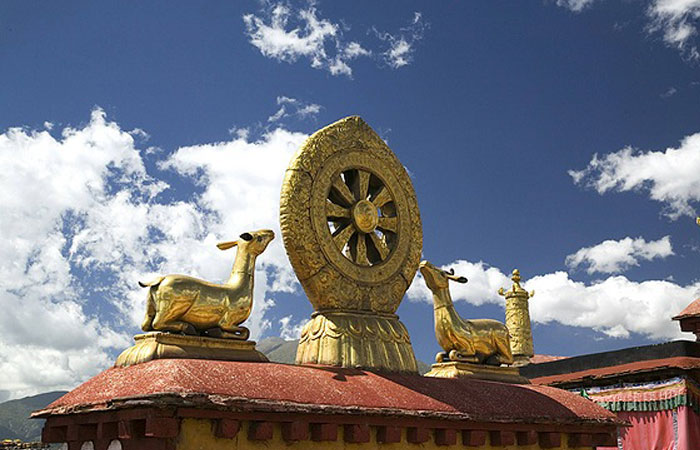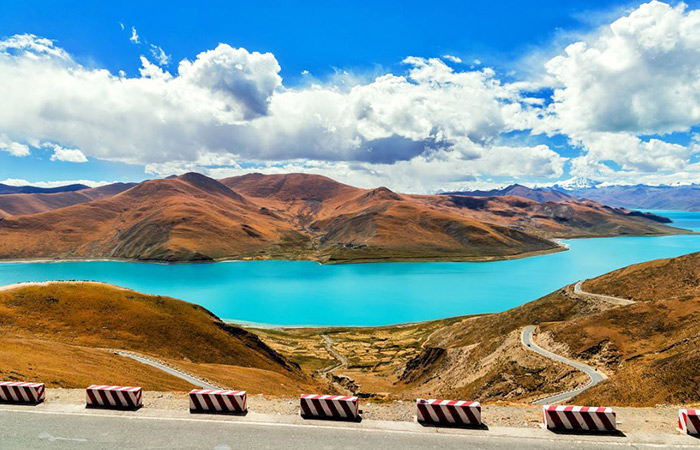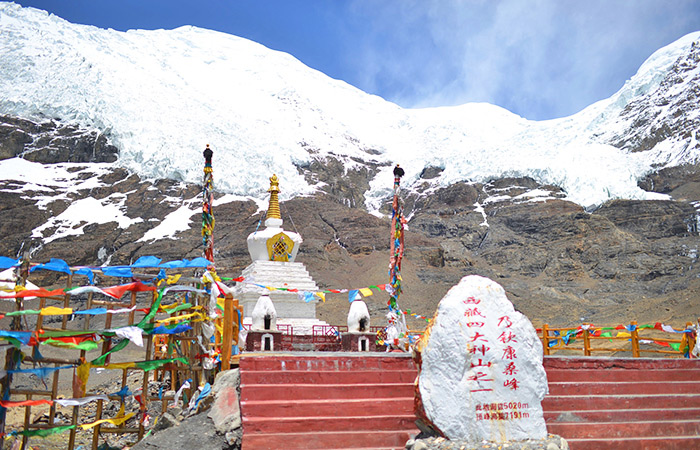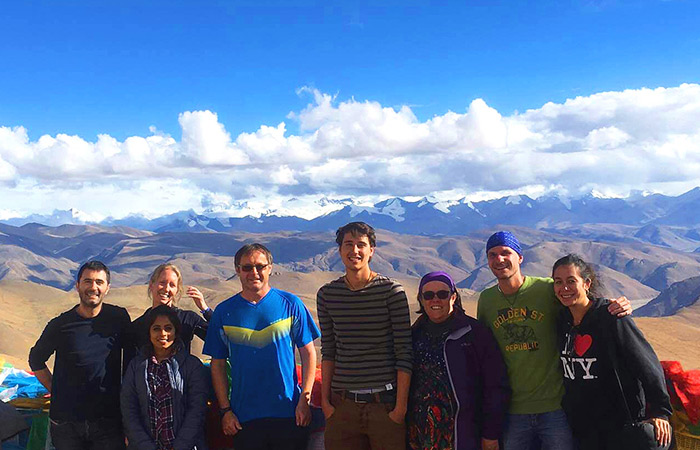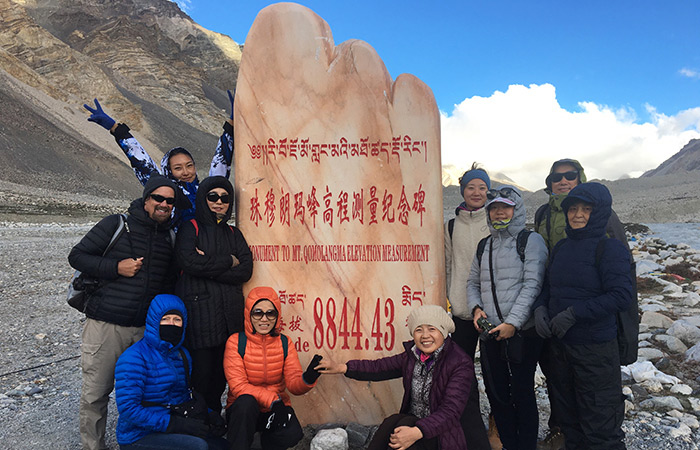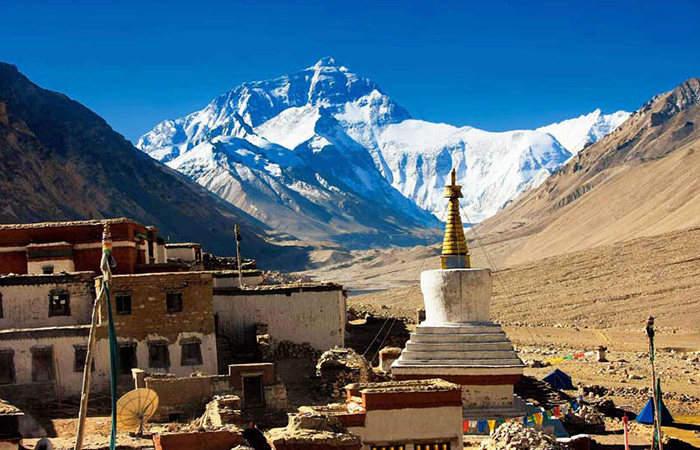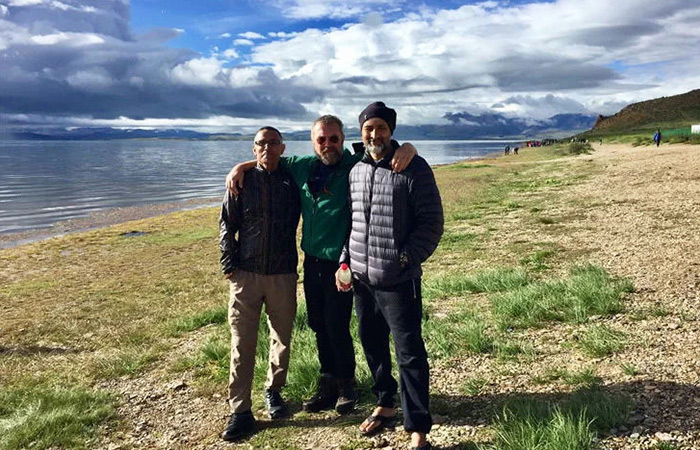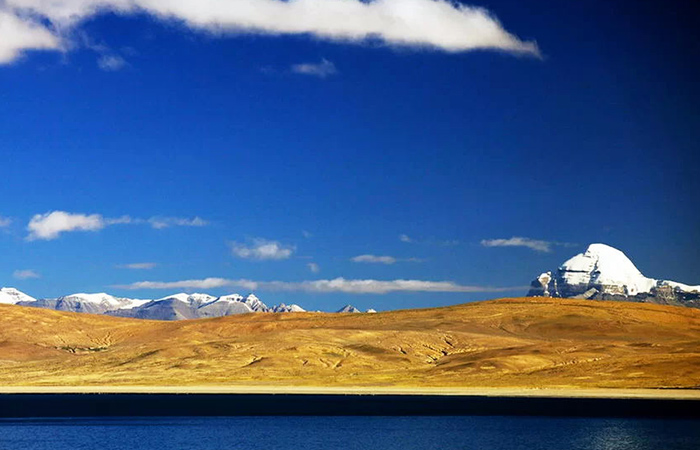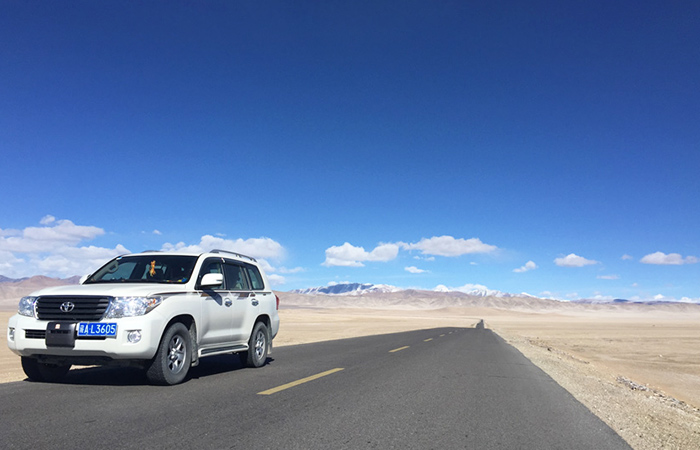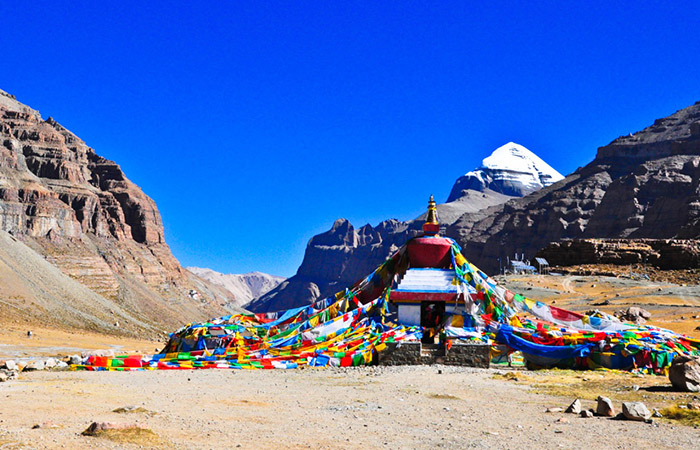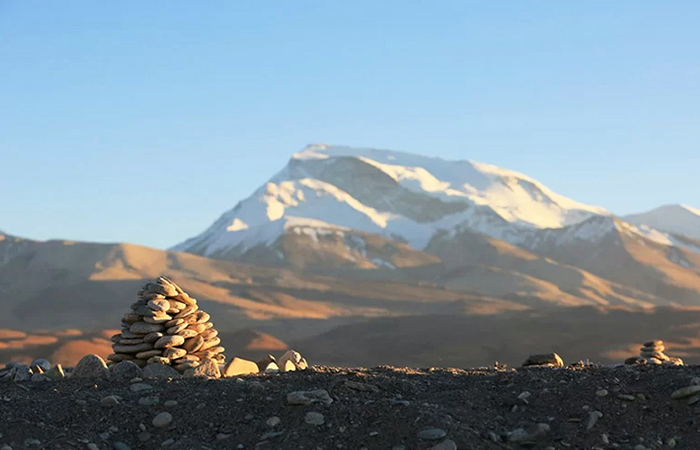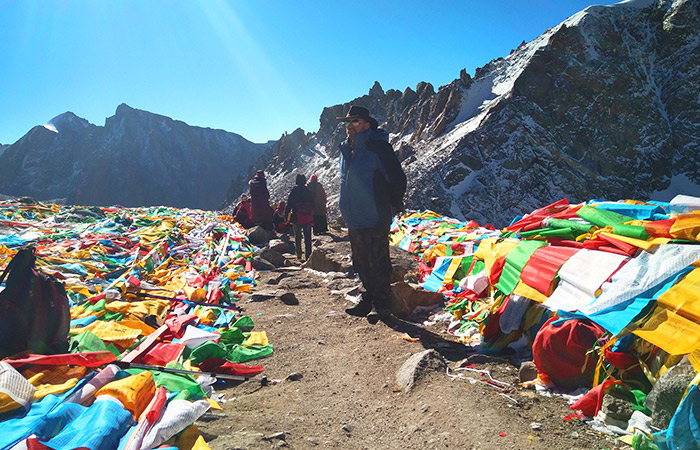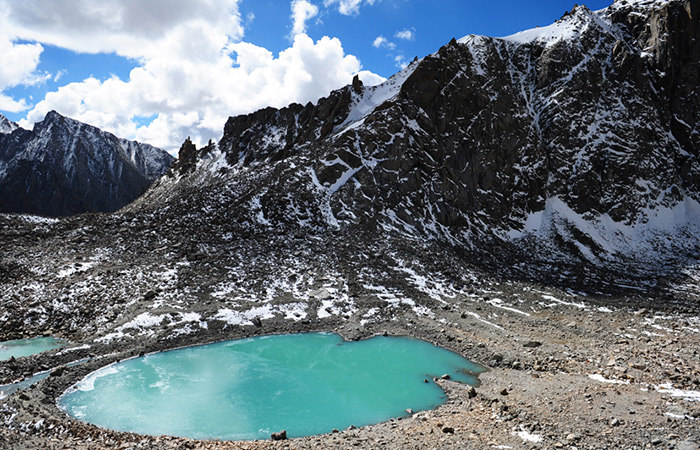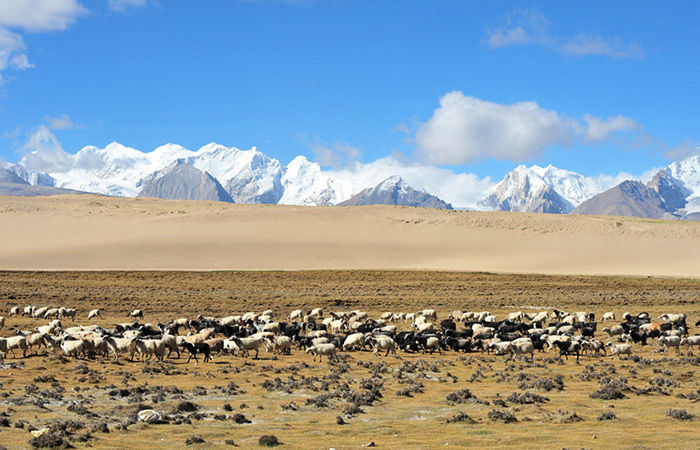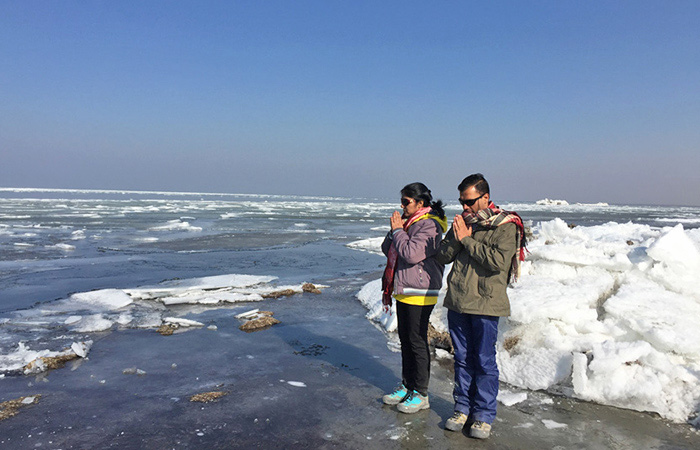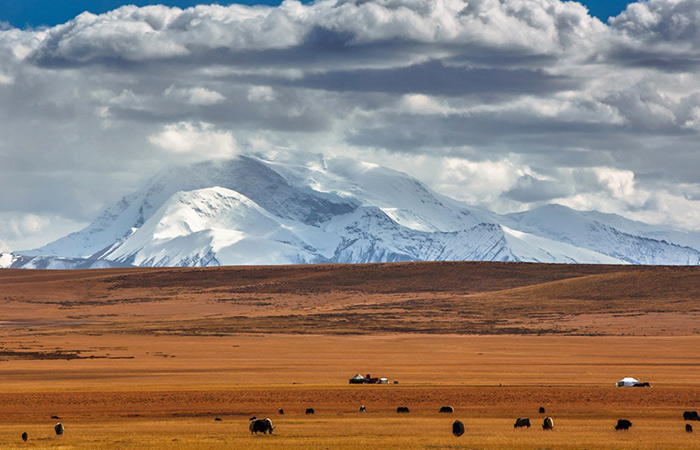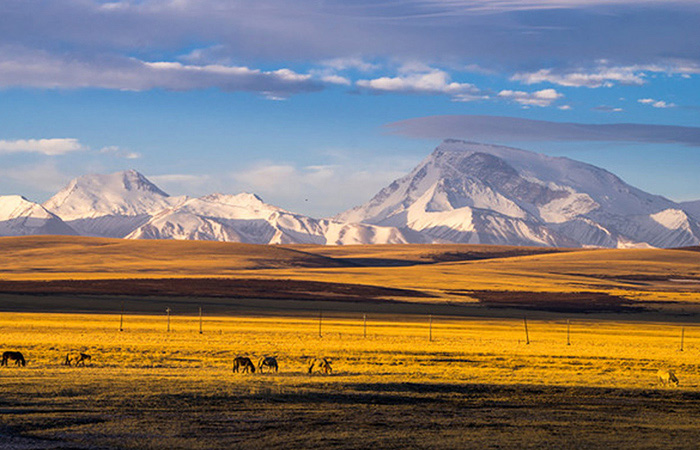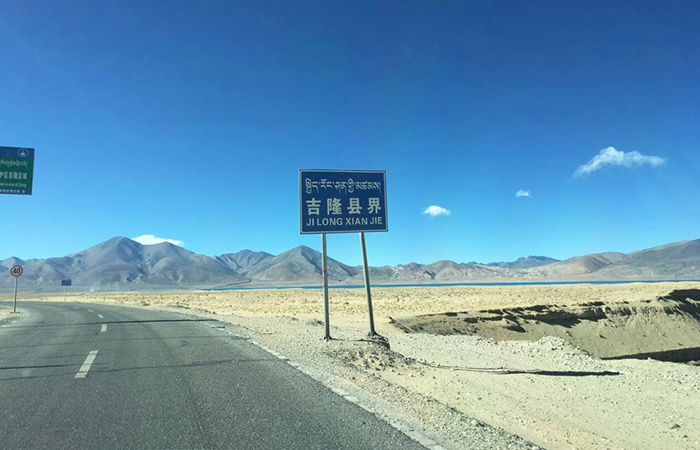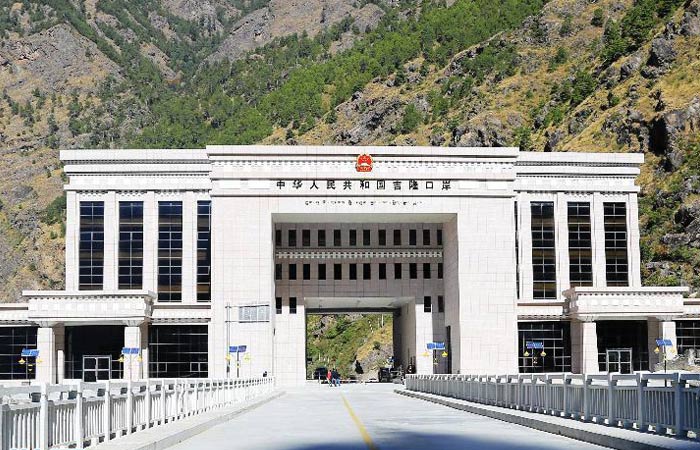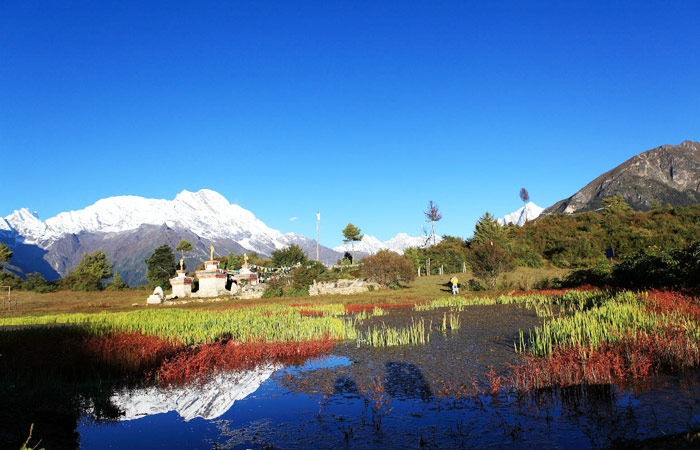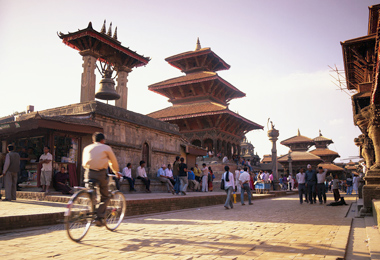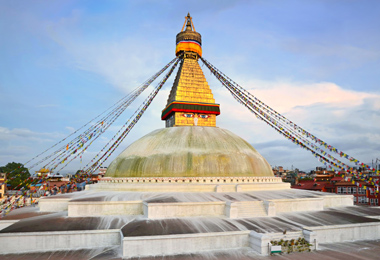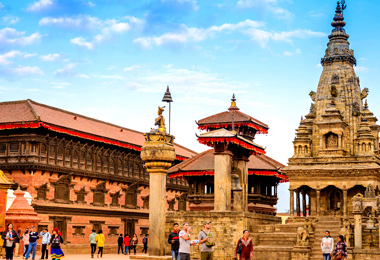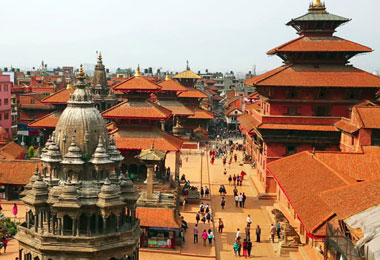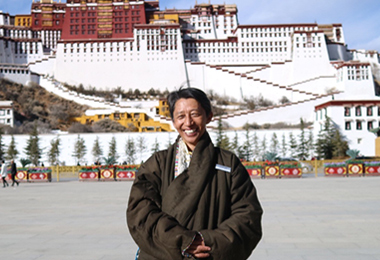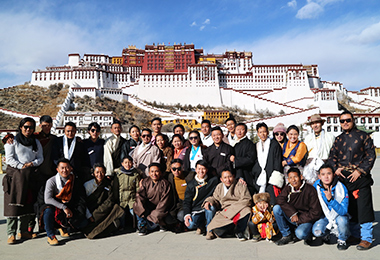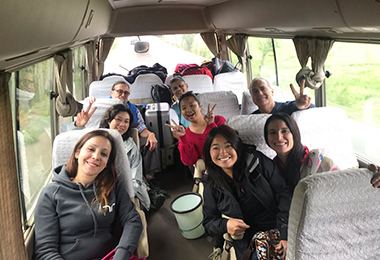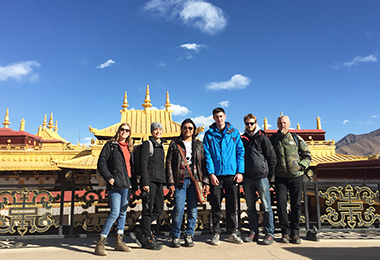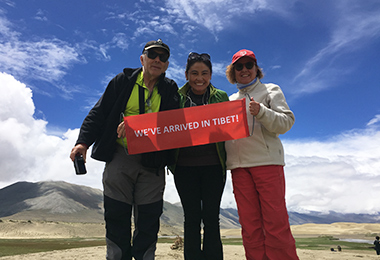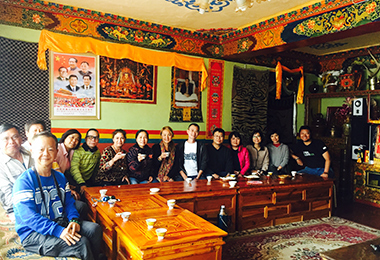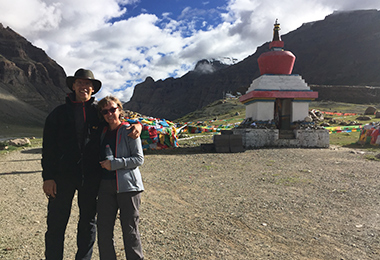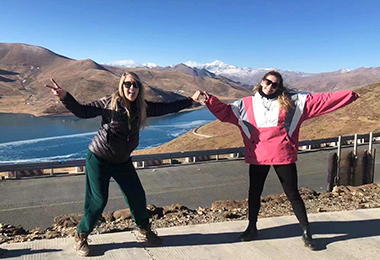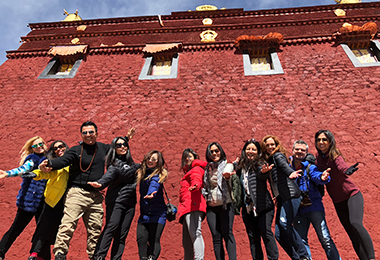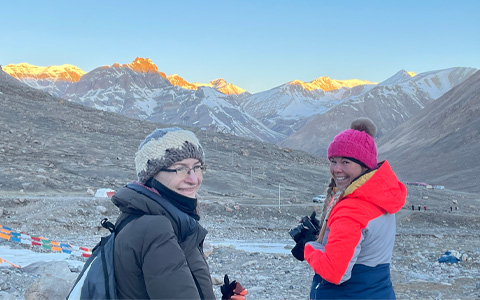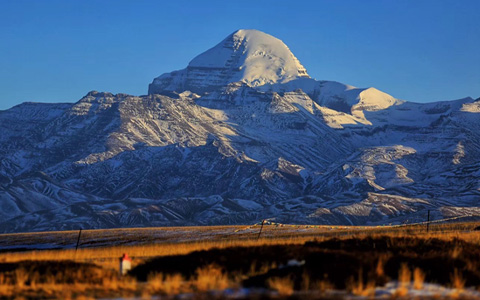Day 1: Arrival in Shanghai
After you arrive in Shanghai, our local travel guide will welcome you at the airport and escort you to your downtown hotel. After checking in, feel free to rest or explore the surroundings at your leisure.
Stay overnight in Shanghai.
Day 2: Shanghai Day Tour to Shanghai Museum, Yu Garden and the Bund
In the morning, visit the Shanghai Museum, a large institution showcasing ancient art, including bronze ware, chinaware, calligraphy, and painting. Next, head to Yu Garden, a famous classical garden in the southern region, known for its beautiful scenery and tranquil atmosphere—making it a peaceful retreat in bustling Shanghai.
In the afternoon, we will transfer you to the Bund area for a short cruise on the Huangpu River. From the cruise ship, you'll see many Western-style buildings in the Puxi area, dating back to Shanghai's colonial days. On the Pudong side, rows of towering skyscrapers will come into view, offering a striking contrast and serving as a testament to the city's development. After exploring the Bund area, you'll visit an old street in Shanghai.
Stay overnight in Shanghai.
Day 3: Shanghai Tour: Zhujiajiao Ancient Town
Today, we will drive one hour from downtown Shanghai to the picturesque Zhujiajiao Ancient Town, often referred to as the 'Venice of China.' You can enjoy a boat ride along the waterway, passing through the charming town, where numerous shops and vendors offer a variety of handicrafts.
Afterward, you'll visit the renowned pedestrian street, Nanjing Road, for a leisurely stroll. This bustling area is perfect for shopping, from small boutiques selling handicrafts and souvenirs to high-end fashion stores. You can also sample local food and snacks.
Stay overnight in Shanghai.
Day 4: Shanghai to Xian by Bullet Train
Today, you’ll board a train from Shanghai to Xi’an. Upon arrival at the Xi’an Railway Station, your local tour guide will greet you and take you to your reserved hotel in the city.
The rest of the day is yours to explore or relax at your own pace.
Overnight stay in Xi’an.
Day 5: Xian Day Tour: Terra-cotta Army and Big Wild Goose Pagoda
Today, you will visit Terra-Cotta Warriors, which is one of the eight wonders in the world. These terracotta warriors and horses are the size of a real army, and were buried alongside the Emperor in a vast underground palace.
Then, you head for Big Wild Goose Pagoda. The Buddhist scriptures and figurines of the Buddha brought by Xuanzang are reserved here.
Travel Tips:
An additional fee of 30 RMB is required for entrance and access to climb the Big Wild Goose Pagoda.
Day 6: Xian Day Tour: Shanxi History Museum, Ancient City Wall, and Muslim Quarter
In the morning, you will head to Shanxi History Museum, where displays a large number of precious historical relics. So, it is a good place to know splendid culture and history of China. In the afternoon, you will have a special experience that is cycling on top of Ancient City Wall. It is the largest and best-preserved ancient city wall in China. Later, you will tour Muslim Quarter, the most famous food court in Xi’an. It is a perfect place to eat special snacks, chat with locals, and buy exquisite souvenir.
Stay overnight in Xi’an
Day 7: Board Xi'an to Lhasa Train
Today, you will board the train to Lhasa at Xi'an Railway Station.
The Xi'an-Lhasa Railway stretches approximately 2,864 km across the heartland of China and the Tibetan Plateau. The journey will take 30 to 35 hours, crossing a 5,200-meter-high mountain pass amidst the grand vistas of surreal mountain ranges and the uniquely shaped Tibetan landscape. It will be an unforgettable expedition, passing by clear, full-bosomed streams cascading down beautiful mountain ranges, sharing gentle kisses with glistening dewdrops—an amorous ride with nature. Each car is equipped with an electronic sign displaying the speed, altitude, and the next stop.
In the compartment, the beds are arranged like bunk beds facing each other across a table, with pressed cotton sheets, pillows, and comforters. Each sleeper has a TV, headset, and oxygen canisters for those experiencing altitude sickness.
Stay overnight on the train.
Day 8: Scenery along the Tibet Railway, and Arrive in Lhasa
Today, you are going to witness the most beautiful scenery of Qinghai-Tibet Railway. Along the way to Nagchu, you could see Tanggula Pass come and go, almost indistinguishable from the rest of the high land. You could find villagers gaze at the passing train and yaks bolted off the tracks. Up here, every few minutes another range of snow-capped peaks with glaciers streaming down their sides appeared on the horizon.
Upon arrival in Lhasa, be greeted by local guide at the train station and be presented with traditional Tibetan White Scarf to wish you good luck! After group photo at the station, board on the vehicle and transfer back to hotel, you will enjoy the spectacular scenery and the typical Tibetan villages on the way.
Stay at the hotel after arrival for adapting to the high attitude. It is helpful to take things easy for the first few days, and try to drink some water just and now.
Day 9: Lhasa Day Tour: Drepung Monastery and Sera Monastery (B, D)
Today, you will first visit the Drepung Monastery, the largest monastery in Tibet that once housed over ten thousand monks. Here, you'll explore the Coqen Hall, where your guide will provide a detailed explanation of the Tibetan Buddhist worldview and narrate the stories of renowned figures in Tibetan Buddhist history.
Additionally, you'll tour the Loseling College (or an equivalent) within Drepung Monastery to understand monks' practices and studies. Exploring their dormitories will offer insight into their daily routines and living conditions.
In the afternoon, the tour proceeds to Sera Monastery, established in 1419 and long regarded as a significant Buddhist seminary. Here, you'll observe the renowned monk debates, a highlight of Sera Monastery. Your guide will provide a comprehensive explanation of how these debates aid monks in acquiring knowledge and advancing through academic degrees.
After today's sightseeing, enjoy a welcome dinner with your fellow members.
Stay overnight in Lhasa.
Day 10: Lhasa Day Tour: Potala Palace, Jokhang Temple & Barkhor Street (B)
After breakfast, your guide will accompany you to visit the magnificent Potala Palace, where you'll stand atop its heights and gaze down upon the city of Lhasa. Your guide will narrate the life and tales of the successive Dalai Lamas within the Potala Palace and meticulously introduce the various halls and treasures housed within its walls.
Once you've explored the grandeur of the Potala Palace, your next stop will be Longwangtan Park nestled at its base. This tranquil spot offers a unique vantage point to admire the majestic Potala Palace and partake in traditional Tibetan cultural experiences.
In the afternoon, you'll head to the sacred Jokhang Temple—the heart of Tibetan faith and life. Within the temple resides the rare and revered 12-year-old statue of Shakyamuni Buddha, an image so lifelike that it resembles seeing the Buddha in person. Around the temple is Barkhor Street, where you can take a clockwise kora, witnessing how local Tibetans practice their Buddhist beliefs.
Following this, your guide will take you to the liveliest indoor Tibetan tea house in Lhasa, where you can enjoy Tibetan sweet tea with locals. Your guide will join everyone, sharing insights into the social relations and daily leisure life of Tibetans.
Stay overnight in Lhasa.
Day 11: Lhasa - Gyantse - Shigatse (B, L)
After exploring Lhasa, you'll travel overland to Shigatse, Tibet's second-largest city. Along the way, immerse yourself in Tibet's splendid scenery and discover the leisurely lives of local villagers.
The first stop will be at Yamdrok Lake, one of the three holiest lakes in Tibet. This stunning lake unveils its beauty from the Gambala Mountain Pass (4790m), curving like a blue ribbon, while the towering Mt. Noijin Kangsang (7191m) can be seen in the distance. As you descend to the lakeshore, explore various viewpoints offering intimate encounters with the lake's shoreline. Towards the lake's end, you'll have the opportunity to visit a welcoming local family in the village and have lunch with them.
Next, you'll pass by the Karola Glacier (5100m). Positioned right by the roadside, it resembles a serene maiden grooming herself while gazing from afar at the majestic snow-capped mountains.
Continuing your journey towards Gyantse, you'll make a stop at Simila Mountain Pass. Here, you can hang prayer flags, offering prayers for global peace and the well-being of your loved ones.
Upon arrival in Gyantse, seize the opportunity to capture memorable photos of the ancient city. En route from Gyantse to Shigatse, you will witness vast stretches of lush green barley fields (in summer) and golden fields (in autumn), alongside numerous farms.
Finally, upon reaching Shigatse and checking into the hotel, take a moment to relax and prepare for the upcoming trip to Mount Everest the following day.
Stay overnight in Shigatse.
Day 12: Shigatse to Everest Base Camp (B)
In the morning, you will set off towards Mount Everest after breakfast. Beginning with the Gyatsola Pass (5280m), the viewpoint offers your first glimpse of Mount Everest. Veiled within the mountain range, Everest resembles a budding lotus flower, a captivating sight along the roadside.
Continuing into Mount Everest National Nature Reserve, the Gawula Pass (5198m) presents a panoramic view of the Himalayas. Here, you will see the breathtaking lineup of the five world's highest peaks in the Himalayan range, all towering above 8000 meters. This is your second glimpse of Mount Everest.
Then traverse the new winding road toward Everest Base Camp (5200m), each turn reveals a closer perspective of the majestic Everest, gradually unfolding before you. This marks your third view of the Everest.
Upon arrival at Everest Base Camp, the huge white pyramid peak stands tall before you. As dusk approaches, the setting sun casts warm golden hues upon Everest's northern face—your fourth view.
As night descends, the glistening Milky Way alongside the snow-white peak of Mount Everest offers your fifth and final encounter with the majestic peak.
Stay overnight at Everest Base Camp or in the nearby village if the EBC tent hotels close during the winter season.
Warm Tips:
1. Everest Base Camp sits at an altitude of 5200 meters, and it's common to experience headaches and difficulty sleeping at night due to altitude. This is a normal occurrence, so there's no need to panic. Continue to take it slow, relax, and savor the beauty of Everest. The symptoms will gradually ease.
2. The visibility of Mount Everest depends on weather conditions and cannot be assured.
3. From November to March, the tent hotels at Everest Base Camp usually close. Hence, if you're traveling during this period, your accommodation choices are restricted to the nearby village near EBC.
Day 13: EBC - Peiku Tso Lake - Saga
After marveling at the magnificence of Mount Everest, you will venture westward into the Ngari Plateau along the Himalayas, marveling at the grasslands, lakes, and snow-capped mountains along the way.
Before departing from EBC, you'll visit the world's highest monastery, Rongbuk Monastery (5154 meters). This Tibetan Nyingma monastery sits in close proximity to Mount Everest and is a place where nuns and monks reside together.
Following this, you will set off towards Tibet's most mysterious plateau, the Ngari Plateau. Along the journey, you will pass by Shishabangma (8027 meters), one of the world's highest peaks. Here, you'll witness the magnificent stature of the three sister peaks of Shishabangma, standing in close proximity, along with the golden-hued Peiku Tso beneath the mountain peaks.
Crossing through the western grasslands of Tibet, you will reach Saga County, a transportation hub in western Tibet and not far from the sacred Mount Kailash. The subsequent journey will take place at an average altitude of 4500 meters on the Ngari Plateau. Upon reaching Saga, if necessary, you can purchase any essential travel supplies for your Kailash trek here.
Stay overnight in Saga.
Day 14: Saga - Zhongba - Darchen
Today's journey will take you through the valleys between the Himalayas and the Gangdise Mountains, to reach the foot of the sacred Mount Kailash.
Along the way, you will have the chance to witness herds of yaks and sheep leisurely grazing on the broad grasslands at the foot of the snow-capped mountains. And the beautiful green lake, Gongzhuo Lake, will come into view at the same time.
After crossing 5211-meter-high Mayum La Pass, you will officially enter the Ngari region. Crossing this pass feels like entering a kingdom of wild animals. What unfolds before you is the sacred Lake Manasarovar with the majestic Mount Kailash towering in the distance.
Continuing along the lakeshore, you'll reach the destination of this journey, the starting point for the Mount Kailash kora trek - Darchen. Upon arrival, you can rest at the hotel, preparing and gathering strength for the forthcoming four-day trek.
Stay overnight in Darchen.
Warm Tips:
If you require porter services during the trek, please inform the guide in advance for arrangements. Note that porter services during the trek are not included in the tour cost and will require an additional fee.
Day 15: Trek Day One: Darchen - Dirapuk Monastery (13 km)
Today is the first day of your Mount Kailash kora trek. During this journey, you'll marvel at the stunning scenery along the southern, southwestern, and western slopes of Mount Kailash.
To begin, you'll board an eco-friendly bus from Darchen to Sarshung village, where your 13-kilometer trek around Mount Kailash begins. This initial leg of the trek is relatively moderate, following the valley at the mountain's base and offering clear vistas of its southern and western slopes.
Upon arrival at the Dirapuk Monastery guesthouse situated at the western slope's base, you'll check in and store your luggage. Then you will follow your guide to explore the ancient Dirapuk Monastery. One of the most awe-inspiring moments here is witnessing the sunset over Mount Kailash. As the sun gently descends, you can patiently wait for the afterglow to illuminate the steep cliffs of the western slope.
After nightfall, you'll have the opportunity to admire the mesmerizing sight of the moon hanging over Mount Kailash's peak.
Stay overnight in Dirapuk Monastery Guesthouse.
Day 16: Trek Day Two: Dirapuk Monastery - Zutulpuk Monastery (24 km)
Are you ready for the most demanding day of your Mount Kailash trek? Today, you'll trek over the 5630-meter-high Dolma La Pass, joining devout pilgrims on this sacred journey.
Early in the morning, you'll depart from Dirapuk Monastery to start today's hiking adventure. After advancing 4 kilometers and steadily ascending to 5430 meters, you'll witness the magnificent sunrise over Mount Kailash's northwest slope.
Continuing for another 2 kilometers leads you to the pinnacle of the Mount Kailash trek - Dolma La Pass (5630 meters). Standing there amidst fluttering prayer flags, it feels like the guardian spirits of the sacred mountain are present.
Throughout your journey, you'll witness devout pilgrims prostrating themselves, measuring the sacred grounds with their bodies, whether on boulders or rocky terrain, showing unwavering devotion.
After successfully crossing Dolma La Pass, the vivid green Lake of Compassion (also known as Guri Kund) comes into view. It's believed that bathing in this lake cleanses a lifetime of sins. Here, you'll also catch sight of the thick glaciers on Mount Kailash's northwest slope.
Continuing down from Lake Guri Kund, a lengthy descent follows until you reach the valley at the southeast base of Mount Kailash. Within the valley, you may encounter charming wildlife and find a resting site on the grassy plains for relaxation.
Stay overnight in Zutulpuk Monastery Guesthouse.
Warm Tips:
Due to the high altitude of Dolma La Pass, even in summer, the path might be icy and scattered with loose stones, so extra caution is required to prevent slipping during the hike.
Day 17: Trek Day Three: Zutulpuk Monastery - Darchen (12 km)
Today marks the finale of your Mount Kailash trek.
In the early morning, you'll depart from Zutulpuk Monastery, returning to the starting point of the Mount Kailash trek, Darchen.
Later in the afternoon, your guide will accompany you on a 30-kilometer drive to visit the sacred Lake Manasarovar. The lakeside offers an ideal spot for meditation, where you can listen to the gentle waves of the sacred lake and immerse yourself in a serene atmosphere.
At the lakeside of Lake Manasarovar, there are also hot springs available for foot baths and soaking. If the trek has left you feeling tired, consider spending some time in the hot springs to relax and soothe your weary body (additional cost applies).
After the tour, return to Darchen, concluding today's fulfilling journey.
Stay overnight in Darchen.
Day 18: Darchen - Saga
Today, you'll retrace your steps back to Saga, rediscovering the beauty of the Ngari Plateau, the Himalayas, and the Gangdise Mountains. Along the way, you can pause at lush green pastures and lakes, getting up close to appreciate the natural scenery of Ngari and its wildlife.
Stay overnight in Saga.
Day 19: Saga - Gyirong
Today, you'll leave the Ngari Plateau and journey toward the Tibetan border, exploring the snowy mountains and lush forests of the Gyirong Valley, nestled on the edge of the Himalayas.
After breakfast, your guide will accompany you to the hidden gem near the Sino-Nepal border – the Gyirong Valley. As the altitude gradually decreases, the scenery transforms from snow-capped barren landscapes to vibrant forests and stunning gorges.
Upon arriving in Gyirong Town in the afternoon, you'll venture into the "most beautiful valley in the world," acclaimed by the British explorer Howard-Bury in “Mount Everest: The Reconnaissance.” In this picturesque wonderland, you'll have the opportunity to visit Sherpa villages, wander through dense forests, and behold the elusive snow peaks above the trees. Additionally, you'll experience a markedly different moist and mild climate compared to the dry, high altitude of Ngari, offering a completely different sensation.
Stay overnight in Gyirong.
Day 20: Gyirong Border - Kathmandu
In the morning, bid farewell to your Tibetan guide and driver. Our staff at the Nepal border checkpoint will welcome you, assist in arranging the handling of your large luggage (additional fee required), help with your Nepalese visa procedures, and ensure your safe transfer in our private car, all the way to your hotel in Kathmandu.
From the border, you'll traverse to the southern foothills of the Himalayas and journey through the Langtang National Forest.
After entering Nepal, you'll encounter numerous snow-capped mountains along the southern Himalayan foothills, such as Gaurishankar Himal (7,134 meters), Ganesh Himal (7,422 meters), Annapurna Range's Annapurna III (7,555 meters), Lamjung W (6,983 meters), Mount Kanguru (6,981 meters), Himchuli West (6,441 meters), Ngadi Chuli (7,871 meters), and Gaurishankar (7,181 meters).
Due to challenging road conditions, we won't make many stops along the way. But you will feast your eyes on the breathtaking landscape along the way, and enjoy the final gift the Himalayas have in store for you.
Finally, you'll complete the 130-kilometer journey and reach your hotel in Kathmandu.
Tips for Nepal Visa Application:
1. Prepare a passport-size ID photo with a white background.
2. The Nepal visa fee is payable at the border. Only cash in US dollars is accepted, credit cards are not.
Day 21: Kathmandu Tour: Durbar Square, Patan, and Swayambhunath
After breakfast, you will go to visit Kathmandu’s Durbar Square. Durbar Square is one of three durbar (royal palace) squares in the Kathmandu Valley. It is the site of the Hanuman Dhoka Palace Complex, which was the royal Nepalese residence until the 19th century and where important ceremonies taken place.
Next, stroll through the narrow streets of Patan, the second largest town in Kathmandu valley. Here you'll encounter ancient temples and admire the intricate wood, metal, and stone carvings on the surrounding buildings, immersing yourself in the charm of the "City of Fine Art".
Finally, visit the Swayambhunath Temple, also known as the Monkey Temple. It sits atop a hill overlooking the Kathmandu Valley, offering fantastic views of the city. The golden spire of the 5th-century Swayambhu Stupa is adorned with a colorful array of fluttering prayer flags.
Stay overnight in Kathmandu.
Day 22: Kathmandu Tour: Changunarayan, Bhaktapur, Pasupatinath, and Bouddhanath
In the morning, you'll begin by visiting Changu Narayan, the oldest Hindu temple in Nepal. This UNESCO World Heritage Site is famed for its stunning architecture and intricate carvings.
Then, go to visit Bhaktapur, the medieval city located in the east corner of Kathmandu Valley. Serving as the political, religious, and cultural hub of Nepal from the early 13th century to the 18th century, this small town has preserved its medieval charm for over 700 years. The ancient palaces, temples, and local residents provide a distinctive glimpse into Nepalese town life.
After that, continue to visit Pashupatinath, the most important Hindu temple in Nepal, had its old buildings destroyed by Muslim invaders in the 14th century, with its stone linga smashed to dust. However, it rose again behind their retreating backs. Succeeding monarchs reinstated the temple and its images.
In the end, you will visit the Bouddhanath (Boudha Stupa), which is among the largest stupas in South Asia and has become the focal point of Tibetan Buddhism in Nepal. The white mound looms thirty-six meters overhead. Located on the ancient trade route to Tibet, Tibetan merchants rested and offered prayers here for many centuries.
Stay overnight in Kathmandu.
Day 23: Finish This Unforgettable Tour and Depart from Kathmandu
Today your guide will transfer you to the airport and help you get on board. Please confirm your departure flight details in advance with your guide. The tour ends.




